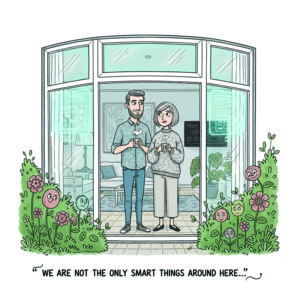Editors Comment
A shift in mindset and market conditions

The atmosphere at the recent Glazing Summit was, at times, difficult to shake. In a room where the prevailing tone leaned toward economic pessimism, it was hard not to be drawn into the wider narrative of slowdown, stagnation, and strain. With the UK economy faltering, the prospect of further tax rises in the autumn budget, and the looming burden of new employment legislation, the outlook for many sectors, fenestration included, appears fraught. Yet to remain mired in this downbeat trajectory is to miss the opportunity that remains present within the market. Yes, sales leads are falling. Yes, costs are rising. And yes, regulatory changes continue to add complexity. But beyond the headlines, there are encouraging signals, if the industry is prepared to pay attention to them.
One such signal emerged from the Summit itself: the notable absence of installers in the audience. Rather than suggesting disengagement, this absence could well reflect strong activity on the ground. Conversations with those in the field support this, with many installers reporting steady pipelines and rising order values, a reassuring counterpoint to the gloom that dominated the conference room.
What’s particularly striking is the profile of today’s customer. While the number of enquiries may be lower, the value of those that convert is increasing. Much of this spending is being driven by younger homeowners, aged 25 to 35, who are demonstrating a growing appetite for high-value installations. This shift in consumer behaviour hints at a broader cultural trend: the home as an investment, not just a place to live.
For an industry often geared toward traditional sales models and demographics, this represents both a challenge and an opportunity. Younger consumers are more informed, more discerning, and more technologically inclined. Their expectations differ and so must the industry’s response.
Among the most under-leveraged opportunities is smart technology. Despite growing consumer interest in connected home solutions, the UK fenestration sector has been slow to embrace products such as smart locks, sensors, and integrated home security systems. Anecdotal resistance, often framed around mistrust of smart locks, persists, yet feels increasingly out of step with broader consumer behaviour.
It is difficult to reconcile the widespread acceptance of digital locks on cars and hotel rooms with the hesitancy around residential installations. The real issue may lie less with the consumer and more with how the trade is selling, or not selling , the benefits of smart technology.
In markets such as France, smart functionality is often integrated as standard, enhancing the value proposition and sustaining premium pricing. With the global smart windows market forecast to grow from $6.45bn in 2025 to $9.54bn by 2029, the UK risks falling behind if it continues to treat smart products as optional add-ons rather than essentials.
Another area ripe for re-evaluation is marketing. Too often, the industry leans heavily on pay-per-click and Google Ads, overlooking the value of brand-building at a local level. Homeowners trust names they recognise, a truth evident in sectors like kitchens and bathrooms. Fenestration should be no different. A strong local brand can rival and, in some cases, surpass a national competitors in securing consumer confidence. Visibility, reputation, and consistent messaging are vital. And with manufacturers investing heavily in innovation, from thermal performance to design aesthetics, the challenge is not a lack of compelling product, but a failure to communicate its value effectively.
As one speaker at the Summit put it: “What’s in your toolbox?” The answer, it seems, is more than many realise. From smart technology to advanced materials, from local brand equity to rising consumer demand, the industry has tools at its disposal. But using them requires clarity of purpose. Rather than diversifying into adjacent home improvement sectors, the fenestration industry might do better to focus on what it does best and do it better. Retrofit solutions, smart integration, and consumer-led product development should form the core of a renewed growth strategy.
In a sector often prone to introspection, it’s time to shift focus from problems to potential. The fundamentals are changing not collapsing. And those prepared to engage with the emerging demands of a younger, savvier, and more quality-conscious homeowner may yet find that the glass is, in fact, half full.
John Cowie – Editor, Windows Active







